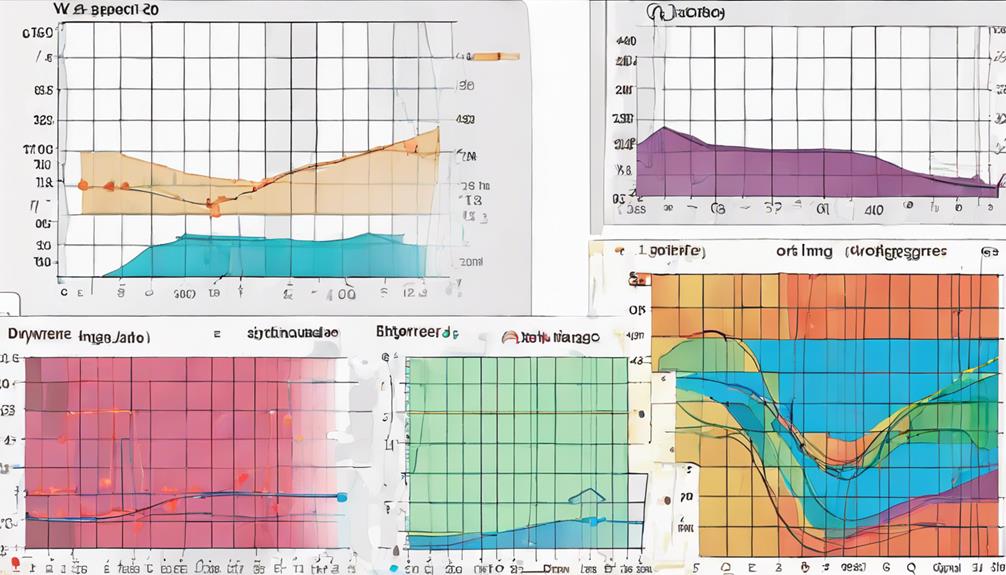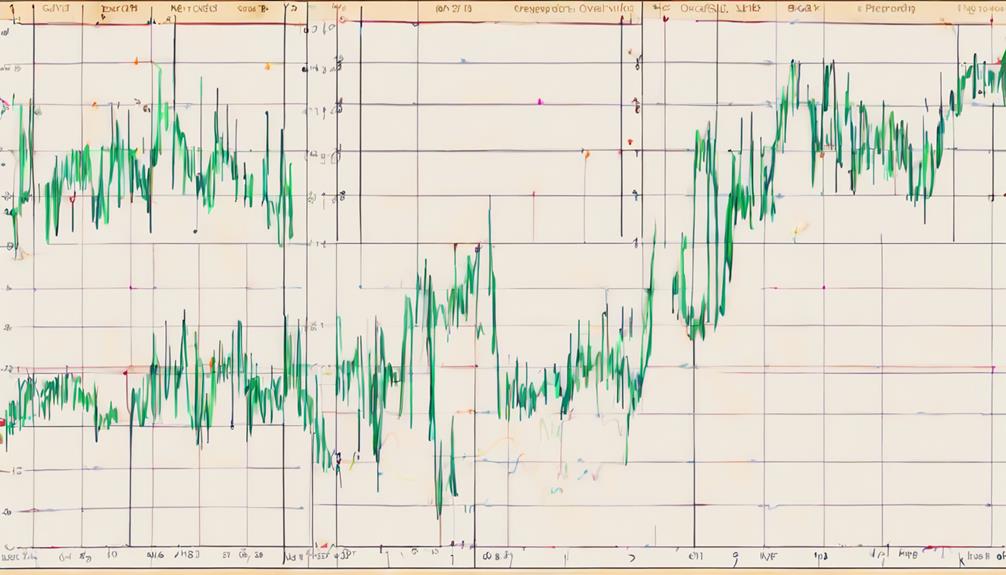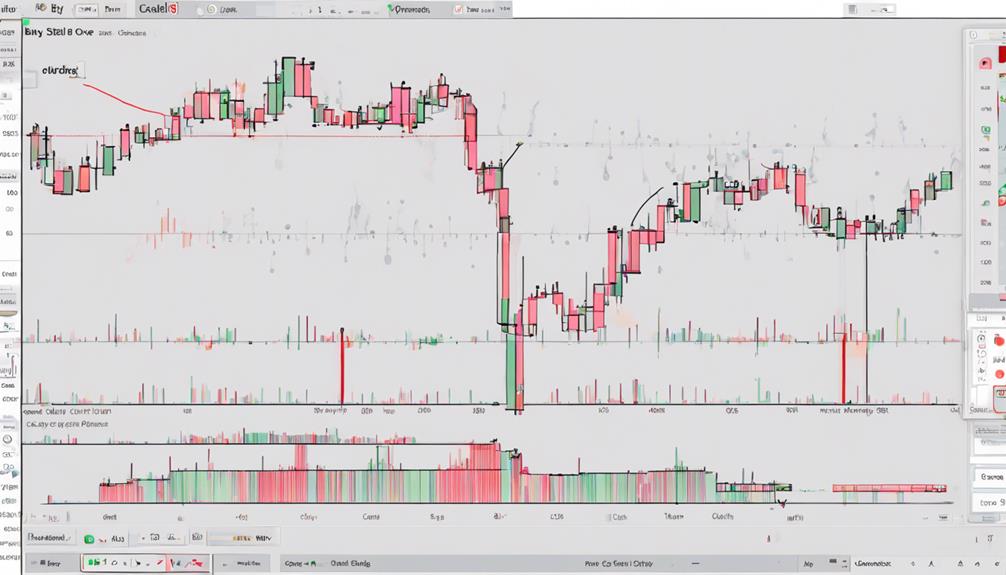For novice traders venturing into the realm of technical analysis, the 'Ultimate Oscillator' stands as a powerful tool offering multifaceted insights into market dynamics. Understanding its calculation intricacies, interpreting the oscillations it presents, and devising practical trading strategies can significantly enhance one's decision-making process in the volatile world of trading.
This tutorial aims to demystify the complexities surrounding this oscillator, providing a solid foundation for traders to navigate its potential benefits. By grasping its nuances and strategic applications, traders can unlock a valuable resource for navigating the ever-changing landscape of financial markets.
Basics of Ultimate Oscillator
The Basics of the Ultimate Oscillator provide a foundational understanding of this technical analysis tool developed by Larry Williams in 1976 to assess buying pressure and true range in financial markets.
The Ultimate Oscillator, categorized as a momentum oscillator, uses a unique approach by incorporating three different time periods (7, 14, and 28) to calculate buying pressure and true range. Buying pressure is determined by the difference between the closing price and the minimum of the low or previous close, while true range is calculated as the difference between the maximum of the high or previous close and the minimum of the low or previous close.
Understanding Calculation Methods

Utilizing a systematic approach, the calculation methods underpinning the Ultimate Oscillator offer traders a methodical means of evaluating buying pressure and true range across varying timeframes.
The Ultimate Oscillator calculates Buying Pressure (BP) by finding the difference between the close and the minimum of the low or previous close, while True Range (TR) measures the high-low range from the high or previous close to the low or previous close.
By computing averages for 7, 14, and 28 periods using weighted averages, the Ultimate Oscillator provides a comprehensive view of buying pressure and true range. This assists traders in assessing a stock's closing relative to current and previous lows and highs, aiding in trend analysis and identifying potential buy/sell signals.
Understanding these calculation methods is essential for interpreting the Ultimate Oscillator readings accurately and making informed trading decisions based on the insights derived from these calculations.
Interpreting Ultimate Oscillator Readings

With a clear understanding of the Ultimate Oscillator's calculation methods in place, delving into the interpretation of its readings is crucial for traders seeking to make informed decisions based on market conditions. When interpreting Ultimate Oscillator readings, traders should consider the following:
- Overbought and Oversold Conditions: Ultimate Oscillator readings above 70 suggest overbought conditions, indicating a potential reversal in the market. Conversely, readings below 30 signal oversold conditions, suggesting a possible buying opportunity.
- Divergence: Observing bullish and bearish divergences between price action and the Ultimate Oscillator can help confirm market trends. Bullish divergences may indicate a potential upward movement, while bearish divergences could signal a downward trend.
- Adjust Trading Strategies: The oscillator's readings of overbought or oversold conditions can assist traders in adjusting their strategies. Buying pressure (BP) readings can help determine the strength of a trend.
- Entry/Exit Points: Proper interpretation of the Ultimate Oscillator readings can guide traders in determining entry and exit points, enabling them to make timely decisions based on the oscillator's signals.
Practical Trading Strategies

A key aspect of implementing successful trading strategies involving the Ultimate Oscillator is the thoughtful integration of various technical indicators for comprehensive market analysis.
When utilizing the Ultimate Oscillator, traders should focus on identifying overbought conditions above 70 and oversold conditions below 30. A practical trading approach involves buying when the oscillator indicates oversold levels and selling at overbought levels, aiming to capitalize on potential price reversals.
To enhance the effectiveness of trading decisions, it is advisable to combine the Ultimate Oscillator with other technical indicators for confirmation of buy and sell signals. Additionally, incorporating trend analysis can provide further insight into market dynamics, helping traders align their positions with the prevailing market direction.
Developing patience is crucial in trading, as waiting for the oscillator to confirm market conditions before executing trades can lead to more informed and potentially profitable outcomes. By following these strategies and exercising discipline, traders can harness the power of the Ultimate Oscillator in their trading endeavors.
Tips for Novice Traders

For novice traders looking to navigate the complexities of the Ultimate Oscillator, understanding its calculation process is a foundational step towards making informed trading decisions. To assist novice traders in effectively utilizing the Ultimate Oscillator, the following tips are essential:
- Interpret Overbought and Oversold Levels: Learning to recognize when the Ultimate Oscillator indicates overbought or oversold conditions can guide traders on potential market reversals.
- Utilize Historical Data: Novice traders can enhance their understanding of the Ultimate Oscillator by practicing with historical data to observe how it reacts in different market scenarios.
- Identify Buy and Sell Signals: Understanding how the Ultimate Oscillator generates buy and sell signals is crucial for novice traders to time their trades effectively and capitalize on market movements.
- Combine with Other Technical Indicators: Novice traders should be cautious about relying solely on the Ultimate Oscillator and consider combining it with other technical indicators to make more well-rounded trading decisions.
What are the Basics of Ultimate Oscillator Indicator for Beginners?
Ultimate Oscillator Indicator is a momentum indicator that combines short-term, intermediate, and long-term price movements. Beginners can learn Ultimate Oscillator Indicator to gauge overbought and oversold conditions in the market. By using multiple timeframes, it helps traders to confirm trend strength and potential reversals.
Frequently Asked Questions
Is Ultimate Oscillator Good?
The Ultimate Oscillator is favored among traders for its ability to provide valuable insights into market conditions, identifying overbought and oversold levels. When used alongside other tools, it can enhance trading strategies and generate accurate buy and sell signals.
Is Awesome Oscillator a Good Indicator?
Like a compass guiding a ship, the Awesome Oscillator navigates traders through market momentum. By measuring the difference between moving averages, it offers insights for strategic buy and sell decisions, aiding in trend analysis and entry/exit points.
What Is the Difference Between RSI and Ultimate Oscillator?
The Relative Strength Index (RSI) and Ultimate Oscillator differ in their approach to analyzing market momentum. RSI focuses on speed and price change, while Ultimate Oscillator incorporates multiple timeframes for a broader view of momentum. Both tools serve distinct purposes in technical analysis.
What Is the Difference Between Stochastic and Ultimate Oscillator?
The Stochastic oscillator and Ultimate Oscillator both assess market momentum but differ in approach. Stochastic focuses on price range and momentum within a single timeframe, while Ultimate Oscillator considers buying pressure and true range across three timeframes for a broader perspective.
Conclusion
In conclusion, the Ultimate Oscillator serves as a valuable tool for traders seeking to analyze market trends and make informed decisions based on momentum.
Like a compass guiding a ship through turbulent waters, this technical analysis tool can help navigate the complexities of the financial markets and identify potential buy and sell signals.
By understanding its calculation methods, interpreting its readings, and implementing effective trading strategies, novice traders can enhance their decision-making process and improve their overall trading performance.
